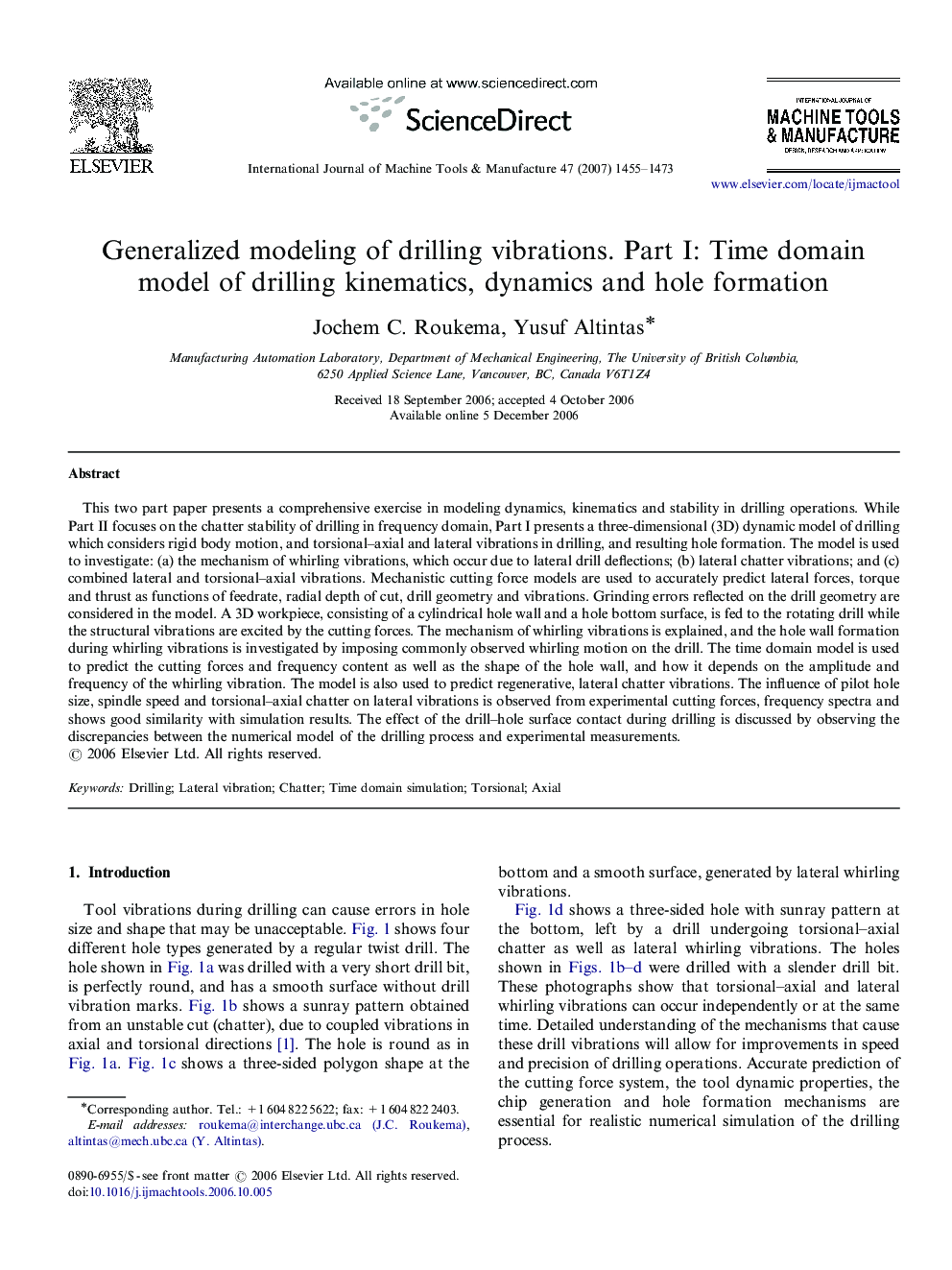| کد مقاله | کد نشریه | سال انتشار | مقاله انگلیسی | نسخه تمام متن |
|---|---|---|---|---|
| 784647 | 1464590 | 2007 | 19 صفحه PDF | دانلود رایگان |

This two part paper presents a comprehensive exercise in modeling dynamics, kinematics and stability in drilling operations. While Part II focuses on the chatter stability of drilling in frequency domain, Part I presents a three-dimensional (3D) dynamic model of drilling which considers rigid body motion, and torsional–axial and lateral vibrations in drilling, and resulting hole formation. The model is used to investigate: (a) the mechanism of whirling vibrations, which occur due to lateral drill deflections; (b) lateral chatter vibrations; and (c) combined lateral and torsional–axial vibrations. Mechanistic cutting force models are used to accurately predict lateral forces, torque and thrust as functions of feedrate, radial depth of cut, drill geometry and vibrations. Grinding errors reflected on the drill geometry are considered in the model. A 3D workpiece, consisting of a cylindrical hole wall and a hole bottom surface, is fed to the rotating drill while the structural vibrations are excited by the cutting forces. The mechanism of whirling vibrations is explained, and the hole wall formation during whirling vibrations is investigated by imposing commonly observed whirling motion on the drill. The time domain model is used to predict the cutting forces and frequency content as well as the shape of the hole wall, and how it depends on the amplitude and frequency of the whirling vibration. The model is also used to predict regenerative, lateral chatter vibrations. The influence of pilot hole size, spindle speed and torsional–axial chatter on lateral vibrations is observed from experimental cutting forces, frequency spectra and shows good similarity with simulation results. The effect of the drill–hole surface contact during drilling is discussed by observing the discrepancies between the numerical model of the drilling process and experimental measurements.
Journal: International Journal of Machine Tools and Manufacture - Volume 47, Issue 9, July 2007, Pages 1455–1473